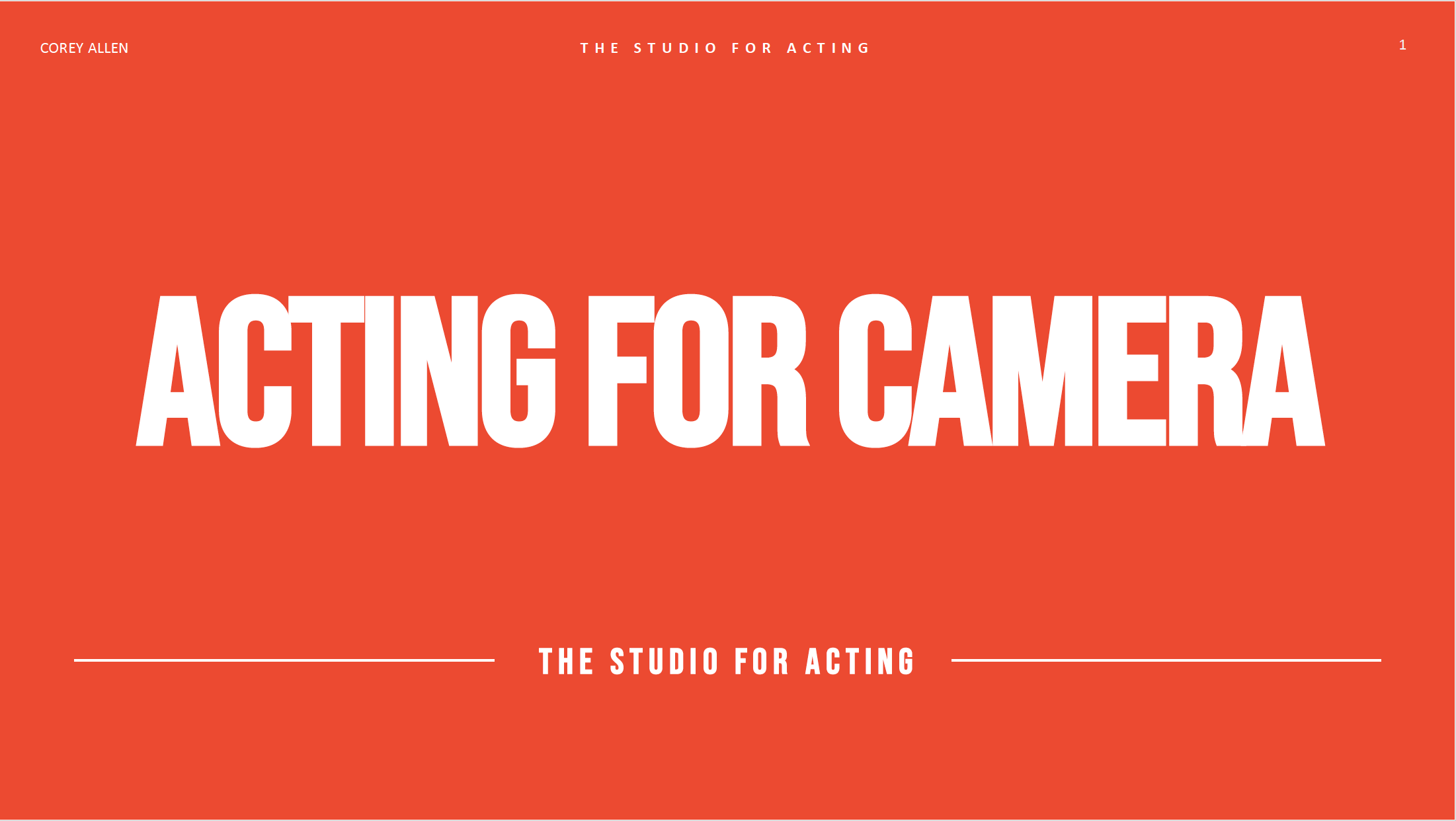Acting for Camera
Overview
I originally put this topic together for an Acting For Camera class that I help teach from behind the camera. The original presentation in PDF form is available at the end.
Today, we’re breaking down how a film scene gets shot, what happens before, during, and after the camera rolls from the perspective of an actor. Understanding this helps you anticipate what’s next, stay ready, and be a better collaborator on set.
Film sets operate like machines, timing and rhythm matter. Everyone has their job. As actors, your role is one of the most visible but often involves a lot of waiting before action.
Four key concepts to be aware of include:
When working on a film or television set, there are several important aspects of the production process that actors need to understand in order to be successful. Key concepts like crew call time, set preparation, shooting scenes out of order, and the reality of long waiting periods all directly impact an actor’s experience and performance. Having a strong grasp of these fundamentals helps actors stay professional, adaptable, and ready to deliver their best work when the camera is rolling.
Crew Call Time — Crew call time is the designated time when all cast and crew must be on set, ready to work. Understanding call times is crucial because it ensures the production stays on schedule and demonstrates an actor’s professionalism.
Set Prep — Set prep refers to the process of preparing the set, props, costumes, lighting, and cameras before shooting begins. Knowing about set prep helps actors understand why there may be delays and how their environment will impact their performance.
Scenes Shot Out of Order — Scenes in film and television are almost always shot out of chronological story order to save time and resources. Actors must be able to emotionally track their character’s journey so their performance feels consistent and authentic despite the shooting order.
Actors Often Wait — Due to the complexity of technical setups, actors often spend long periods waiting between takes or scenes. Patience and focus during downtime are essential for maintaining energy and delivering a strong performance when the camera rolls.
Nine Technical Steps
Not every step occurs in this order on every shoot, and some of these might not happen at all depending on the size of your production. But, these are common steps and language you will hear when filming a scene.
Pre-call Prep — Crew Call: Everyone arrives at basecamp or location. Set Prep: G&E (Grip & Electric) and Art Department start prepping the set.
Blocking Rehearsal — Private Rehearsal: The director works with the actors to block out the scene (where they move, sit, stand, etc.), often without crew. Marking Positions: 2nd AC or camera team marks actors’ positions with tape or markers. Script Supervisor takes notes on continuity and timing.
Tech Rehearsal — Full Crew Watch: Director invites key departments (DP, camera, gaffer, key grip, sound) to watch a final rehearsal. Everyone notes the blocking, movements, and actions so they can prepare.
Lighting & Camera Setup — Lighting Setup: Gaffer and key grip light the scene per the blocking. Camera Setup:DP and camera team prep the camera, lenses, and shot framing. Stand-ins (if used): Used for lighting and focus while principal actors are in hair/makeup.
Final Touches — Hair/Makeup/Wardrobe: Final adjustments before rolling. Set Dressing: Art Department resets or finalizes props and set pieces. Sound Prep: Boom op and sound mixer prepare mics.
Camera Rehearsal — Camera Rehearsal: Especially for complex moves or stunts — director may run a rehearsal with the camera team and actors. Adjustments: Lighting, marks, framing adjusted as needed.
Roll Camera — “Picture’s up!”: AD calls for quiet and gets everyone ready. “Rolling!”: Sound and camera roll. Slate: 2nd AC claps the slate (or says “marker”). “Action!”: Director calls it. Scene plays out. “Cut!”: Director ends the take. Reset or Move On: Based on performance and technical aspects.
Playback & Notes — Director Reviews Take (optional). DP, sound, or script supervisor may note issues. Reset for another take or setup for the next shot.
Coverage — Repeat steps 3–8 for different angles (close-ups, inserts, etc.)
Key Tips for Actors on Set
Hit Your Mark — Even an inch off can throw you out of focus, change the framing, or waste an entire take.
Stay In Your Light — Subtle shifts can change the look drastically. Honor the work put in to light your scene.
Move With Purpose — Avoid fidgeting or unnecessary movement, be intentional with your movements.
Be Consistent — Match your actions and your timing between takes.
Know Your Shot Size — The closer the frame, the smaller the performance.
Let Your Eyes Work — Thoughts can read clearly on camera, especially in a close-up or ECU.
Understanding how a film set operates is one of the best ways an actor can elevate their craft and build trust with the crew. From respecting call times and preparing for set adjustments, to navigating out-of-order shooting and staying patient during downtime, mastering these fundamentals makes you a more reliable and professional collaborator. Pairing that awareness with technical skills like hitting marks, staying in your light, and delivering consistent performances will set you apart. Whether you’re just starting out or refining your on-camera technique, the better you understand the rhythm of a working set, the more confident and effective you’ll become in front of the lens.




